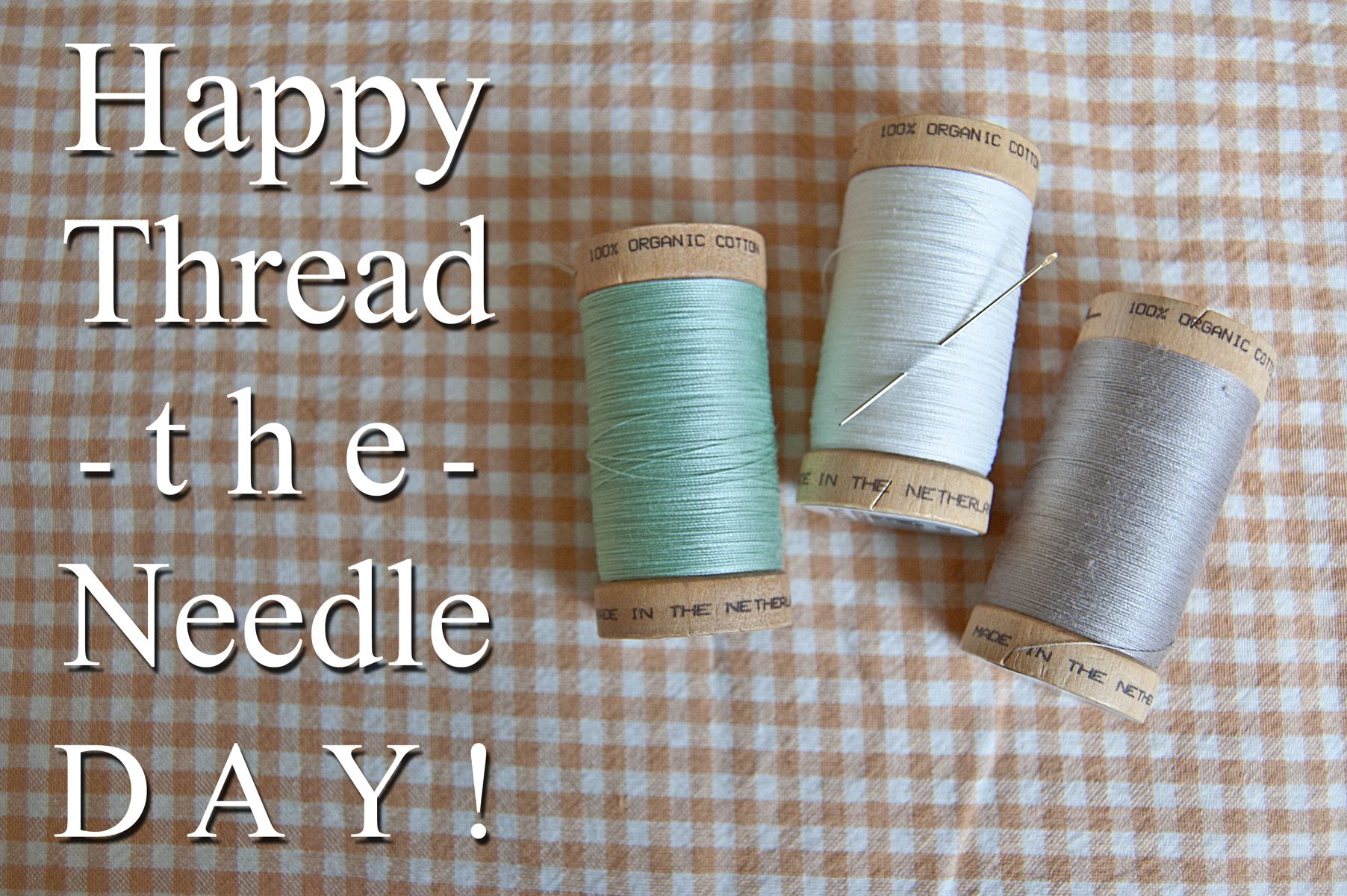July 25th is Thread The Needle Day, a day to practice the nearly forgotten tradition of sewing. Within the last several decades, the “make do and mend” mentality has seemingly been tossed in the trash (along with the mending pile), but if everyone dusted off their sewing accoutrements on this day to hem those too-long jeans or stitch on a wayward button, we could sincerely make a difference in the future of our planet.
About 83% of discarded textiles end up in landfills. When natural fabrics decay there – rather than in a compost pile – the lack of oxygen creates methane gas. Methane is extremely destructive to our environment, but we can start celebrating this little known holiday by learning a few tricks to keep those less-than-perfect textiles out of the trash.
How to Sew a Button:
Snip a length of thread about 24 inches long. Thread your needle and knot the ends together twice. This gives you 12 inches of thread to work with.
Place the button in its appropriate spot, and hold it in place with your non-dominant hand. Send the needle up through the back of the fabric (aka the “wrong” side), and through one of the buttonholes. Bring it down through another hole, but before pulling it tight, lay a second needle right inside this stitch. Pull tight. Tip: The thicker your fabric is, the thicker your second needle should be!
Repeat this stitch twice in these two holes. After you poke down into the fabric that last time, bring your needle up through a third hole. Stitch over the second needle into the fourth hole three times.
With your needle through the wrong side of the fabric, remove the second needle from on top of the button. Gently tug the button upward so you can see the threads behind it. Send your needle up through the fabric (but not through a buttonhole) and wrap your thread three times around the threads behind the button. This creates a “shank” which allows space for the second layer of fabric once the button is in use. To finish, stick your needle back down through your fabric and add a secure knot!
The Hem Stitch:
Begin by threading your needle. This time, we don’t want to double the thread since hemstitches are meant to be invisible, so tie a knot at only one end of the thread. I’ve chosen dark thread and light fabric so you can easily see my stitches, but you will want your thread to blend with the fabric.
Now, with your needle behind the hem, stitch up through it right where the fabric folds (so the knot will be hidden inside the hem). Next, catch a few of threads of fabric in the main part of the clothing you are hemming. The fewer threads you catch, the less visible it will be on the “right” side of the garment.
Again catch a few threads of fabric directly at the fold of the hem. Continue to sew in this manner all the way around the garment. When you reach the beginning again, hide your finishing knot within the hem.
Now that we know these handy stitches, let’s use them, in conjunction with the five Rs to prevent cloth from ending up in the landfills. Here’s how:
- Reduce the amount of textiles you buy. Make do with what you have by mending!
- Reuse clothing by buying from thrift stores, hosting clothing swaps or wearing hand-me-downs. Donate your old items so someone else can reuse them.
- Repurpose sheets by turning them into curtains or convert a shirt into a skirt. Bonus: this is much less expensive than purchasing new yardage, so find a sewing pattern you like and start practicing!
- Recycle textiles if possible. The clothing company Patagonia has a recycling program available for any of their used garments. Similarly, Textile Recovery Facilities will break down clothing and remanufacture it for use in cars!
- Rot any 100% natural fibers like cotton, wool and silk in your compost. They came from the earth and as long as they aren’t blended with synthetic fibers, they can return to earth just as easily!
By practicing these techniques, we can each do our part to thread the needle for environmental responsibility. Join us in celebrating this unique holiday by whipping out a needle and thread and honing a new skill!
Julia Marchand writes for eBay about sustainability, upcycling and living a greener lifestyle. Follow Julia on Google+.







